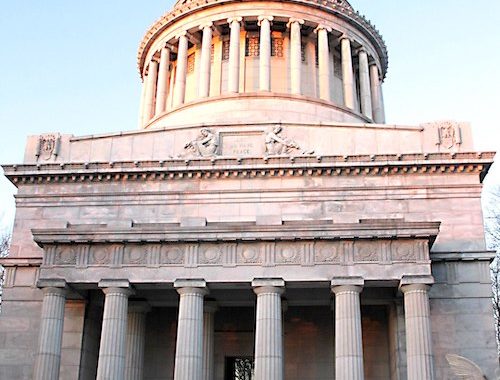From Spy Sites of New York: Secrets of Seven New York Landmarks
Planning a trip to New York? Flying to JFK? Taking the train to Grand Central Terminal? Going to the Statute of Liberty? Visiting the Museum of Modern Art? Visiting the heights of the Empire State Building? Walking around Grant’s Tomb? Sitting in Central Park? If so, you are in the presence of the ghosts of spies past and likely in the company of practitioners of today’s spycraft.
1. IDLEWILD FIELD (JFK AIRPORT): WHERE SPIES OPENED THE MAIL
John F. Kennedy International Airport, known prior to 1963 as Idlewild Field, was the site of a secret CIA mail-opening operation that began in 1952 and ended in 1973. Code-named HTLINGUAL, the operation examined more than 200,000 pieces of mail to and from Soviet Bloc countries. The purpose of HTLINGUAL, to detect communications between spies, was the continuation of a joint British-FBI mail-opening program during World War II targeting Germany and Japan. That work was done in the basement of Bermuda’s Princess Hotel primarily by women who were judged suited to a job requiring a high-level of fine motor skills. Known as “flaps and seals” specialists, the women tested suspect letters and envelopes for secret writing and sought evidence of microdots. After letters were opened and photographed, they were placed back into their envelopes, resealed, and, leaving no trace of tampering, returned to the mail.
2. LADY LIBERTY: DAMAGED BY SABOTEURS
The highest viewing point from the Statue of Liberty is not her crown but rather the off-limits torch. Visitors are prohibited from climbing the ladder in Lady Liberty’s right arm to the torch’s observation platform because of damage for a sabotage operation conducted more than 100 years ago. On July 30, 1916, German saboteurs launched an attack on a munitions plant located on Black Tom Island in nearby Jersey City. The prolonged detonation from two million pounds of munitions was felt as far away as Philadelphia and caused property damage of $20 million dollars. Lady Liberty was hit by flying debris, damaging her skirt and right arm holding the torch but remained standing.
Afterward, investigations into the Black Tom explosion continued for two decades until 1939 when the German-American Mixed Claims Commission in The Hague found Germany responsible and issued a $50 million judgement.
3. GRAND CENTRAL TERMINAL: SPYCRAFT IN ACTION
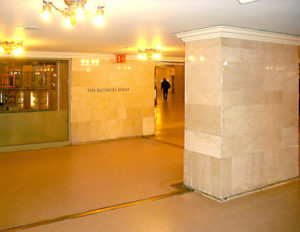 During the height of the Cold War, a CIA officer perfected a new technique for spies to exchange secrets in a public place. Known as a “brush pass,” a physical handoff enabled two persons to exchange a package or document so naturally and so quickly that the action was virtually undetectable. The choreographed technique introduced a magician’s sleight-of-hand and misdirection combined with careful site selection. In the backdrop of multiple stairways and frequent congestion of Grand Central Terminal, the brush pass was rehearsed, refined and first used by Czechoslovakian agent in the Biltmore Hotel. This covert exchange method became a valuable tool for spies in Iron Curtain countries where private meetings between Westerners and locals were impossible.
During the height of the Cold War, a CIA officer perfected a new technique for spies to exchange secrets in a public place. Known as a “brush pass,” a physical handoff enabled two persons to exchange a package or document so naturally and so quickly that the action was virtually undetectable. The choreographed technique introduced a magician’s sleight-of-hand and misdirection combined with careful site selection. In the backdrop of multiple stairways and frequent congestion of Grand Central Terminal, the brush pass was rehearsed, refined and first used by Czechoslovakian agent in the Biltmore Hotel. This covert exchange method became a valuable tool for spies in Iron Curtain countries where private meetings between Westerners and locals were impossible.
4. MOMA: FIGHTING THE COLD WAR WITH ART
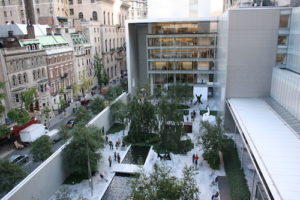 The Cold War involved a cultural as well as a political challenge from Soviet communism. Throughout Europe, the USSR promoted the virtues of communism expressed through art known as “socialist realism.”. Capitalism, the Soviets asserted, was incapable of producing serious art. Faced with this challenge, the CIA hired Thomas Braden, an OSS veteran and former executive secretary of the Museum of Modern Art (MoMA) to develop covert political and psychological operations against Soviet nonsense. Beginning in 1950, Braden envisioned that through CIA’s covert funding of organizations such as the Congress for Cultural Freedom
The Cold War involved a cultural as well as a political challenge from Soviet communism. Throughout Europe, the USSR promoted the virtues of communism expressed through art known as “socialist realism.”. Capitalism, the Soviets asserted, was incapable of producing serious art. Faced with this challenge, the CIA hired Thomas Braden, an OSS veteran and former executive secretary of the Museum of Modern Art (MoMA) to develop covert political and psychological operations against Soviet nonsense. Beginning in 1950, Braden envisioned that through CIA’s covert funding of organizations such as the Congress for Cultural Freedom
American values could be showcased throughout Europe with public exhibits, concerts and festivals. As a result the funding enabled jazz musicians, opera recitals, the Boston Symphony Orchestra, and similar headliners to tour Europe. A traveling exhibit, Masterpieces of the Twentieth Century, featured 200 paintings curated by James Johnson Sweeney, former director of MoMA. The talents of American artists such as Jackson Pollock, Robert Motherwell, and Dutch immigrant Willem de Kooning were revealed to the European world. The message was clear: freedom of expression enjoyed by American artists was leading the modern art movement.
The effect was immediate. Critics around the world hailed American, not Soviet, artistic expression. After jazz legend Dave Brubeck toured Eastern Europe, a Polish admirer said, “Mr. Brubeck, you come to Poland, you did not bring jazz. You brought the Empire State Building, you brought the Grand Canyon, you brought America.”
5. THE EMPIRE STATE BUILDING: BROADCASTING TRUTH
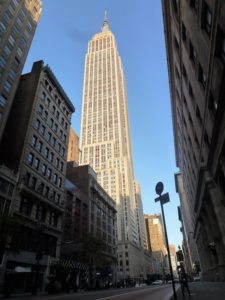 A little noticed press article on June 1, 1949, announced the formation of the National Committee for Free Europe Inc in room 301 of the Empire State Building. The committee’s leadership was comprised of prominent citizens, such as Gen. Dwight D. Eisenhower, Time magazine founder Henry Luce, and movie producer Darryl Zanuck. The humanitarian purpose of the “privately funded” organization was to assist refugees escaping communism. In fact, the Committee was part of a covert operation by the CIA which gave funds to the Committee were used to underwrite Radio Free Europe. RFE began broadcasting into the USSR and Eastern Europe on July 4, 1950 and was virtually the only source of accurate news available to those confined behind the Iron Curtain. CIA’s funding remained a secret for twenty years.
A little noticed press article on June 1, 1949, announced the formation of the National Committee for Free Europe Inc in room 301 of the Empire State Building. The committee’s leadership was comprised of prominent citizens, such as Gen. Dwight D. Eisenhower, Time magazine founder Henry Luce, and movie producer Darryl Zanuck. The humanitarian purpose of the “privately funded” organization was to assist refugees escaping communism. In fact, the Committee was part of a covert operation by the CIA which gave funds to the Committee were used to underwrite Radio Free Europe. RFE began broadcasting into the USSR and Eastern Europe on July 4, 1950 and was virtually the only source of accurate news available to those confined behind the Iron Curtain. CIA’s funding remained a secret for twenty years.
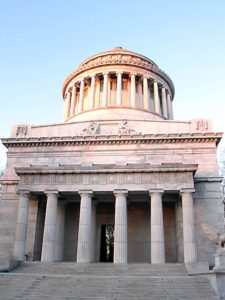 6. GRANT’S TOMB: A MIDNIGHT RECRUITMENT
6. GRANT’S TOMB: A MIDNIGHT RECRUITMENT
Dmitri Fedorovich Polyakov, a Soviet military intelligence officer assigned to the UN in the early 1960s, expressed willingness to work with the US government during a 1961 military cocktail party at Fort Jay on Governors Island. Several weeks later at another diplomatic party, FBI special John Maybey was introduced to Polyakov and proposed a clandestine meeting at President Grant’s tomb. The Soviet accepted and at midnight on November 23,1961, the two met at the national monument. There Polyakov agreed to become a spy for the US and was given the code name TOPHAT. For the next two decades, Polyakov worked as an agent while in Moscow and during overseas assignments. He became one of America’s most valuable penetrations of the USSR’s intelligence organizations, then retired and lived comfortably with his family in a Russian dacha until 1985. That year CIA traitor Aldrich Ames provided information to his Soviet handlers that led to the genera’s arrest and execution.
7. CENTRAL PARK: GLOWING FOXES
William Donovan, director of the World War II Office of Strategic Services encouraged innovation by saying, “Go ahead and try it.” Inevitably, ideas ranged from the pragmatic to the madcap. PROJECT FANTASIA was mad to the core.
An OSS officer observed that the fox had a special place in Japanese folklore but a glowing fox was seen in that culture as a bad omen. To exploit this belief and inspire pessimism about the outcome of World War II among Japan’s population, PROJECT FANTASIA was proposed as a psychological operation. The project envisioned releasing illuminated foxes into selected areas in Japan, but before deployment, the concept needed field testing. In late 1944, 30 foxes, painted with a radiant compound supplied by the United States Radium Corporation, were released at night in Central Park. The sight of the cavorting glow-in-the-dark animals set off a small panic among park goers, described by the New York Herald Tribune as producing “screaming jeemies.” The test was judged a success and FANTASIA received operational approval, but the war came to an end before it could be implemented.
These and more than 200 other episodes of espionage are recounted in Spy Sites of New York: A Guide to the Region’s Secret History, now available at amazon.com and from local book sellers.

